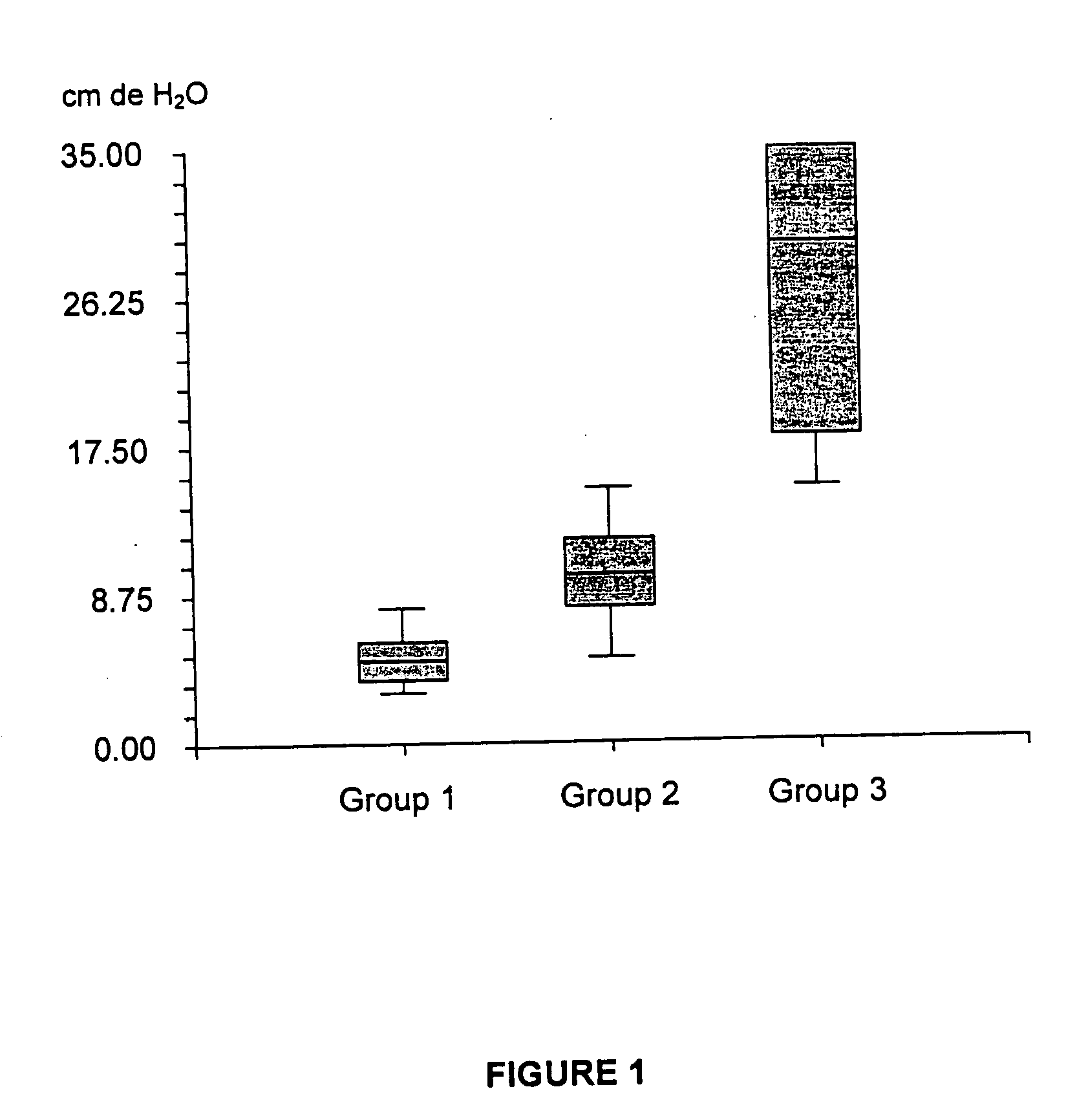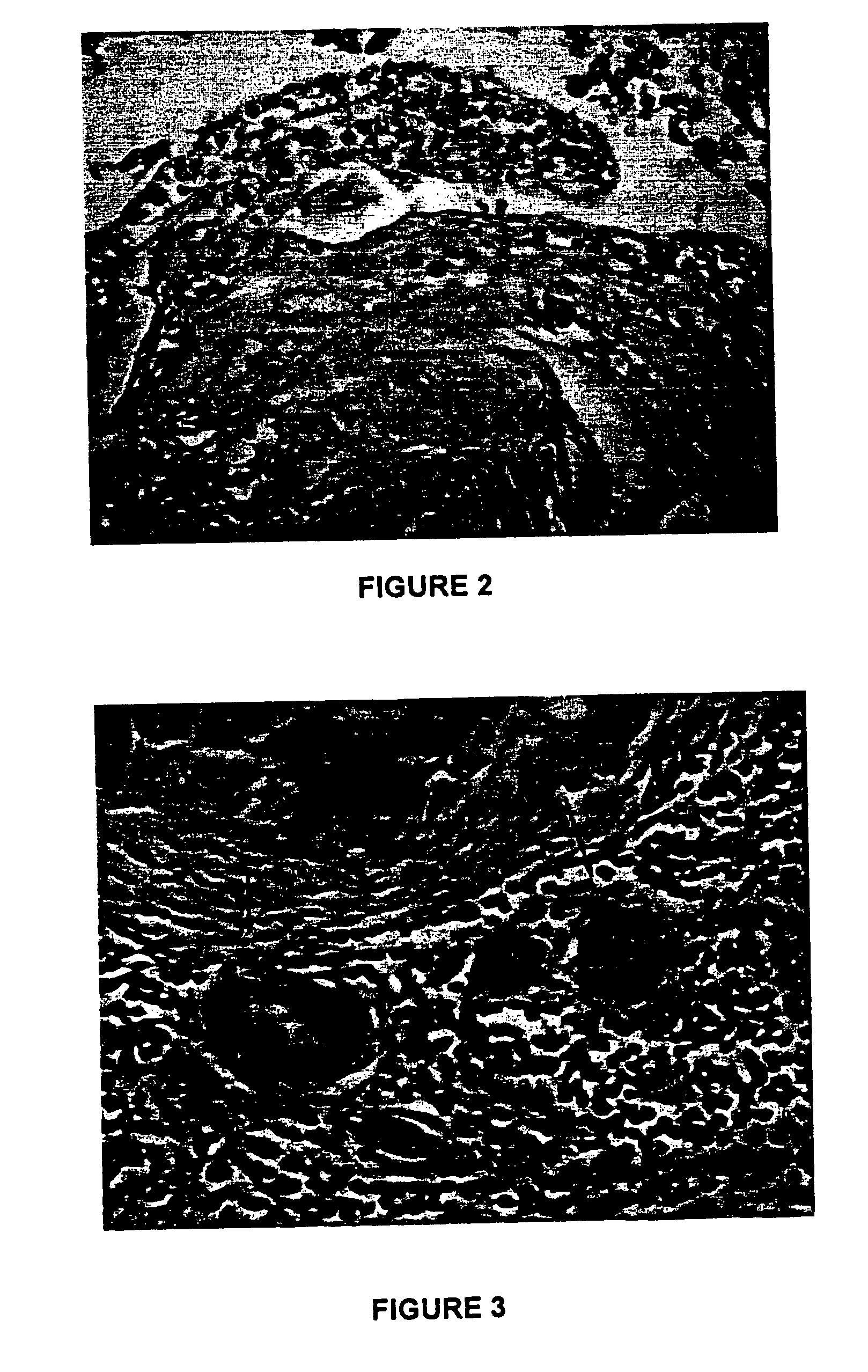Biodegradable, non-toxic biological adhesive for use in abdominal surgery
- Summary
- Abstract
- Description
- Claims
- Application Information
AI Technical Summary
Benefits of technology
Problems solved by technology
Method used
Image
Examples
example
[0100] The following examples are provided solely to illustrate the present formulation, and are not intended to limit the scope of the invention.
[0101] A biological adhesive of the present invention was prepared in the following way: Approximately 93-94% by weight of dextrin, 1-2% borax (industrially used in the production of maltodextrin), 0.4-0.5% formaldehyde (used in industrial formulations as an additive to make the adhesive more water-resistant and to slow bacterial growth during storage), 5% by weight of adhesiveness modifier agent, and 0.5% by weight of the antibiotic agent are added to a small container. The presence of borax and formaldehyde are not required in the inventive formulation. Borax and formaldehyde are typically present in industrial produced maltodextrin. The components are vigorously mixed together for about 15 minutes using a mechanical agitator, until a homogenous mixture or paste is formed. If a homogenous mixture does not form, the mixture is warmed up ...
PUM
| Property | Measurement | Unit |
|---|---|---|
| Fraction | aaaaa | aaaaa |
| Fraction | aaaaa | aaaaa |
| Percent by mass | aaaaa | aaaaa |
Abstract
Description
Claims
Application Information
 Login to View More
Login to View More - R&D
- Intellectual Property
- Life Sciences
- Materials
- Tech Scout
- Unparalleled Data Quality
- Higher Quality Content
- 60% Fewer Hallucinations
Browse by: Latest US Patents, China's latest patents, Technical Efficacy Thesaurus, Application Domain, Technology Topic, Popular Technical Reports.
© 2025 PatSnap. All rights reserved.Legal|Privacy policy|Modern Slavery Act Transparency Statement|Sitemap|About US| Contact US: help@patsnap.com



